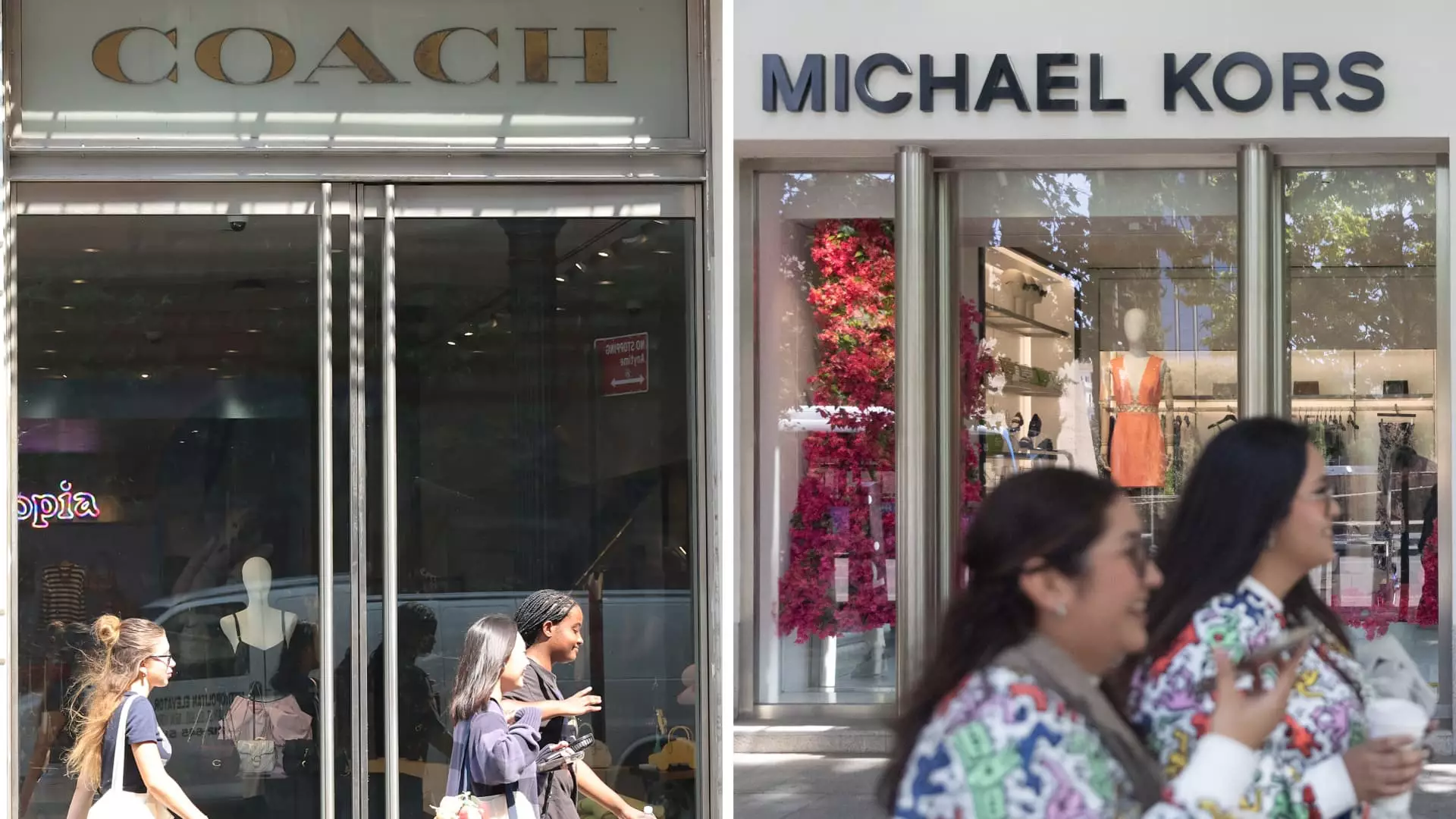The recent legal intervention by the Federal Trade Commission (FTC) to block Tapestry Inc.’s acquisition of Capri Holdings has ignited discussions within the luxury goods market. On a critical Thursday, Judge Jennifer Rochon pronounced a preliminary injunction, emphasizing the competitive landscape of the fashion industry. The prohibition of this $8.5 billion merger has triggered significant reactions from both companies and market observers, raising intriguing questions about the future trajectory of luxury branding and consumer accessibility.
The ruling by Judge Rochon followed a swift trial in New York, where arguments centered around the pro-competitive nature of the merger were made by Tapestry. Tapestry, the parent company of brands such as Coach and Kate Spade, contended that the union with Capri, which owns luxury labels like Versace and Michael Kors, would actually enhance market offerings. They express their intent to appeal the ruling, asserting that the merger would not only be beneficial for the brands involved but also for consumers craving versatile, accessible luxury products.
On the flip side, the FTC’s stance is rooted in concerns that the merger would diminish competition in the luxury landscape. The agency posits that a lack of rivalry could lead to price hikes and a reduction in product quality in a segment already fraught with consumer sensitivity due to inflationary pressures.
Market Response and Reactions
The immediate aftermath of the judge’s decision saw Tapestry’s stock soar by approximately 10%, a clear indication of market optimism surrounding the company’s ability to navigate this turbulence. Conversely, Capri’s stock plummeted nearly 50%, reflecting investor anxiety about the deal’s potential fallout and its implications for future financial stability. This stark contrast highlights the high stakes involved in corporate mergers, especially in luxury sectors where brand identity and market share are paramount.
Tapestry’s vigorous rebuttal against the FTC’s ruling underscores a broader narrative: the fashion industry’s dynamism and the need for robust competition to satisfy evolving consumer preferences. The company’s CEO stated, “The intense competitive landscape necessitates a merger that can deliver enhanced value to consumers.” This proclamation posits that a united front against ferocious competition from both traditional and new players in the market is essential for sustainability.
As inflation continues to plague everyday consumers, particularly in the context of discretionary spending on luxury items, the FTC’s intervention seeks to safeguard consumer access to affordable options. Consumers today are feeling the squeeze of economic pressures, making the availability of competitively priced luxury products even more crucial.
The FTC’s worry is that consolidating two large players into a single entity could further complicate this issue, with fewer competitive forces at play to keep prices in check. Henry Liu, the FTC’s Director of the Bureau of Competition, articulated this sentiment by stating the merger would lead to less access to quality handbags, a staple for many consumers. This perspective taps into a growing concern regarding consumer rights and affordability in an industry often criticized for exorbitant pricing.
The Tapestry-Capri saga does not merely reflect a clash between corporate ambitions and regulatory safeguards; it symbolizes a transformative moment for the luxury goods market. The era dominated by singularly powerful entities is gradually ceding ground to a landscape where consumer choice is empowered by a multitude of available options. In a world characterized by rapid shifts driven by social media trends, luxury brands must remain agile and responsive to the evolving desires of younger consumers who crave both innovation and affordability.
As competitors in the luxury sector continue to innovate and expand, companies must find avenues to differentiate themselves while fostering consumer loyalty. This means investing significantly in product quality, sustainability, and accessibility—factors that will ultimately determine the success or failure of any company, regardless of its market share.
The FTC’s decision marks a significant chapter in the ongoing dialogues surrounding mergers and consumer protection. Tapestry’s intent to appeal suggests a commitment to pursuing its growth strategy despite regulatory hurdles, while Capri’s precarious financial standing raises concerns about its future. As the luxury market adapts to new realities shaped by regulatory scrutiny and shifting consumer demands, the outcomes of such legal battles will resonate far beyond the courtroom, influencing trends, prices, and the very nature of competition in an ever-evolving industry. The eyes of stakeholders will be keenly focused on the next steps taken by both companies amid a climate of heightened vigilance regarding market dynamics and consumer welfare.

Leave a Reply